Best electronic keyboards 2025: Our top picks for every budget
We round-up the best electronic keyboards for novices through to pros, from Yamaha, Roland, Korg, Nord and more…
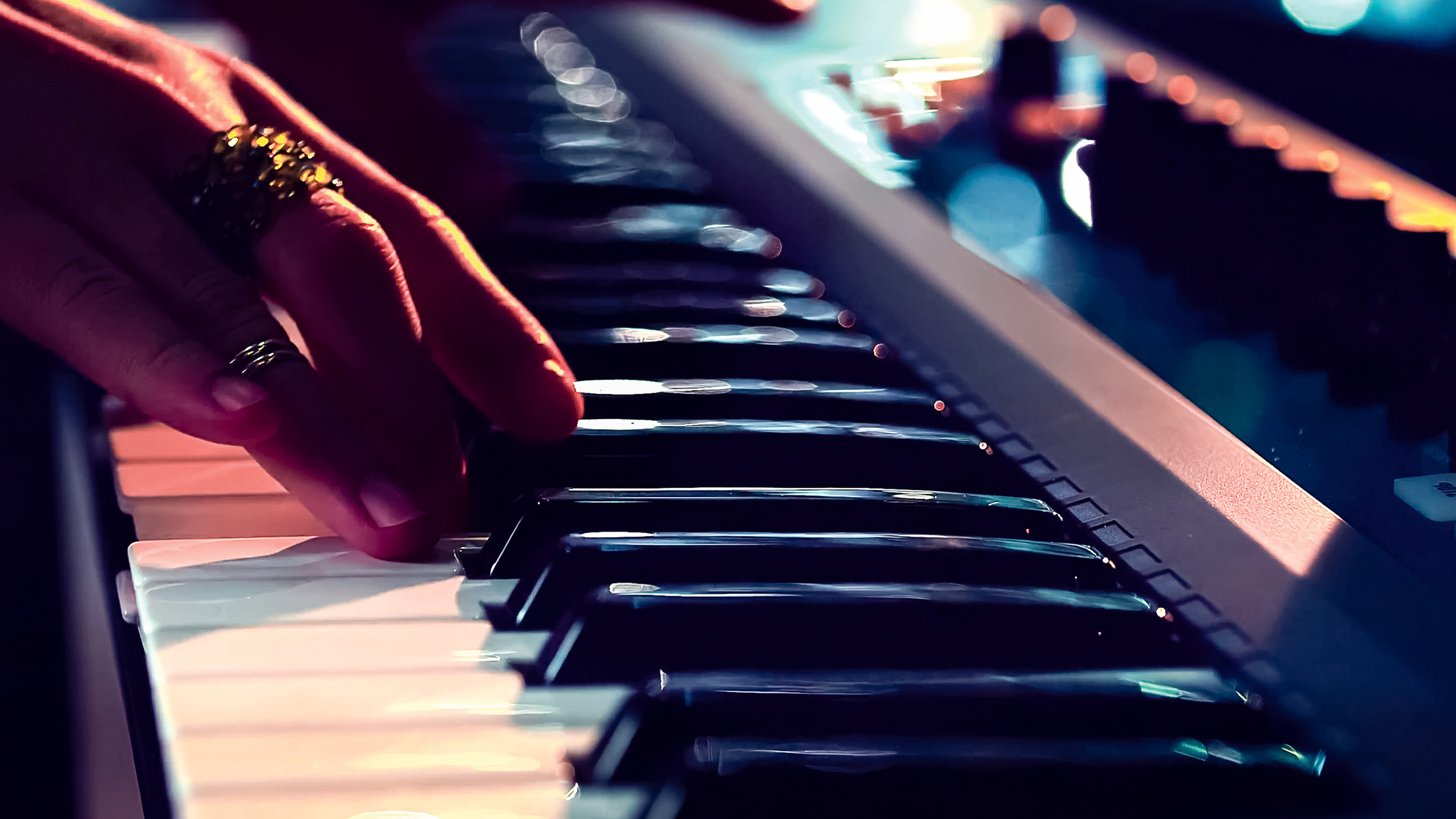
The term 'best electronic keyboard' is so broad it can cover anything from professional workstations and arranger keyboards to consumer home and education models. Consequently, this buyer’s guide includes a wide range of electronic keyboards, from beginner-friendly keys that are easy on the wallet to more sophisticated models perfect for gigging and studio musicians.
Finding the perfect electronic keyboard can be a daunting task, but fear not. Our experts have done the hard work for you, researching and reviewing the best keys out there from the leading brands. So, sit back and enjoy this expert round-up of the best electronic keyboards on the market right now.
We've sorted this guide into three sections: beginner, intermediate, and pro. This makes it easier to find exactly what you are looking for. We've also included some deeper buying advice at the end of the article if you need a little more guidance. So, without further ado, let's dive in.
Our top picks
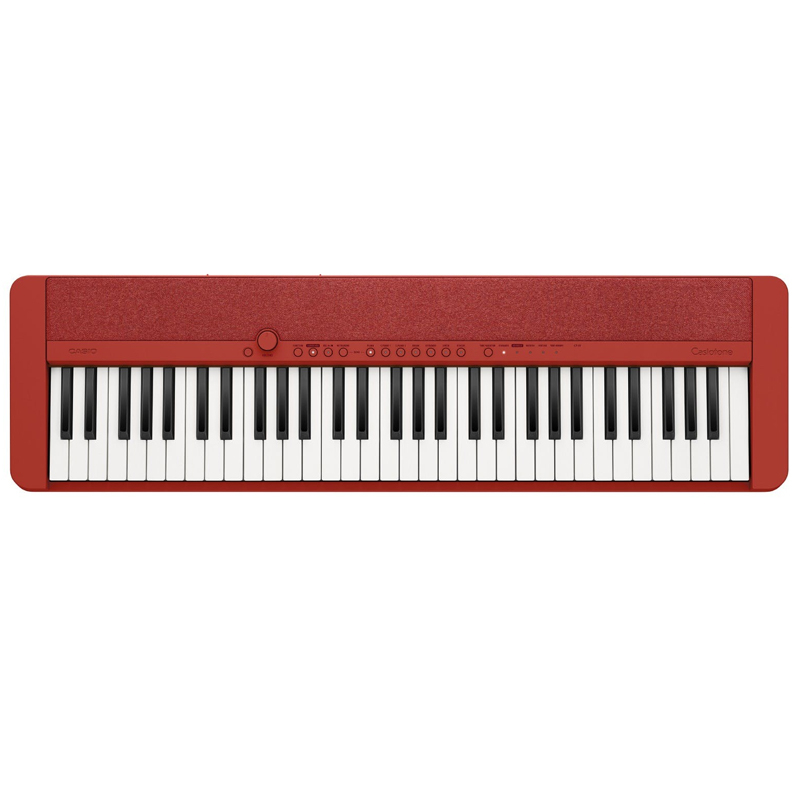
Using the original '80s model as its inspiration, the CT-S1 is a modern take on Casio's famous portable keyboard. With 61 built-in voices, 61 full-size, touch-sensitive keys, and now 64 note polyphony, this is our top pick for beginners looking for an easy-to-use, great-sounding, and fabulously playing instrument that won't break the bank.

Of the 600 AiX-generated tones, the dynamic piano, organ, string and synth sounds are the CT-X700’s strong suits, and there’s a large bank of world instruments to explore. You’ll also find 195 preprogrammed rhythms with variations and fills, 110 song demos, and 50 practice exercises on board.
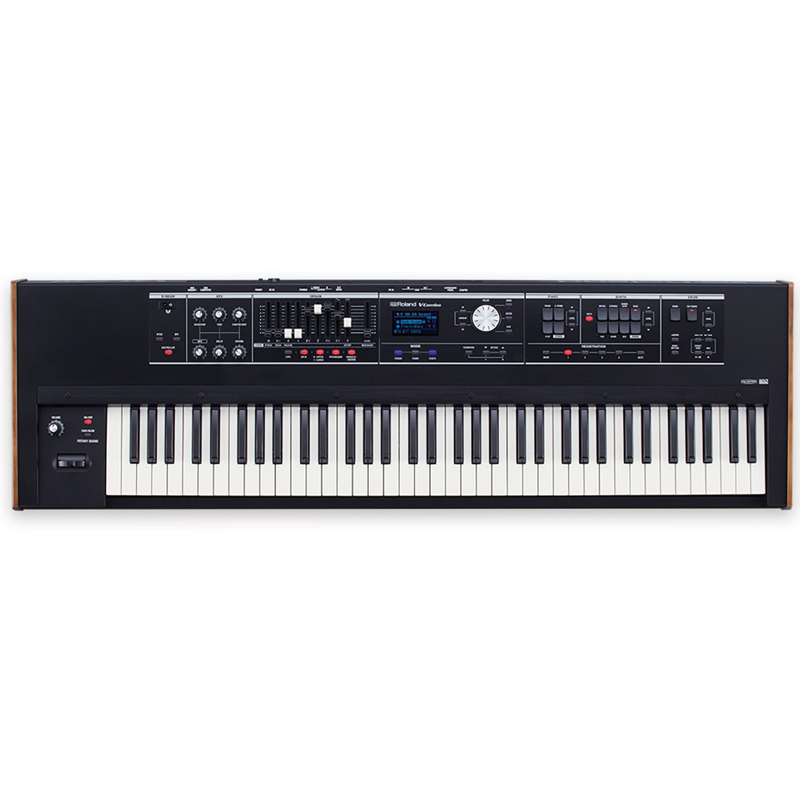
This sleek 61-note keyboard is designed with the professional musician in mind, giving you access to a wide variety of voices suitable for any musical situation. With everything from pianos to synths, electric pianos to organs, you’ll never run out of sounds to experiment with - and each sound is easily adjusted via its neatly organized front panel.
Beginners keyboards
Below, you'll find a small cross-section of what we believe are the greatest beginner keyboards on the market. If you want more options, be sure to head over to our dedicated best beginner keyboards guide, where we go into even more detail.
Best beginner overall
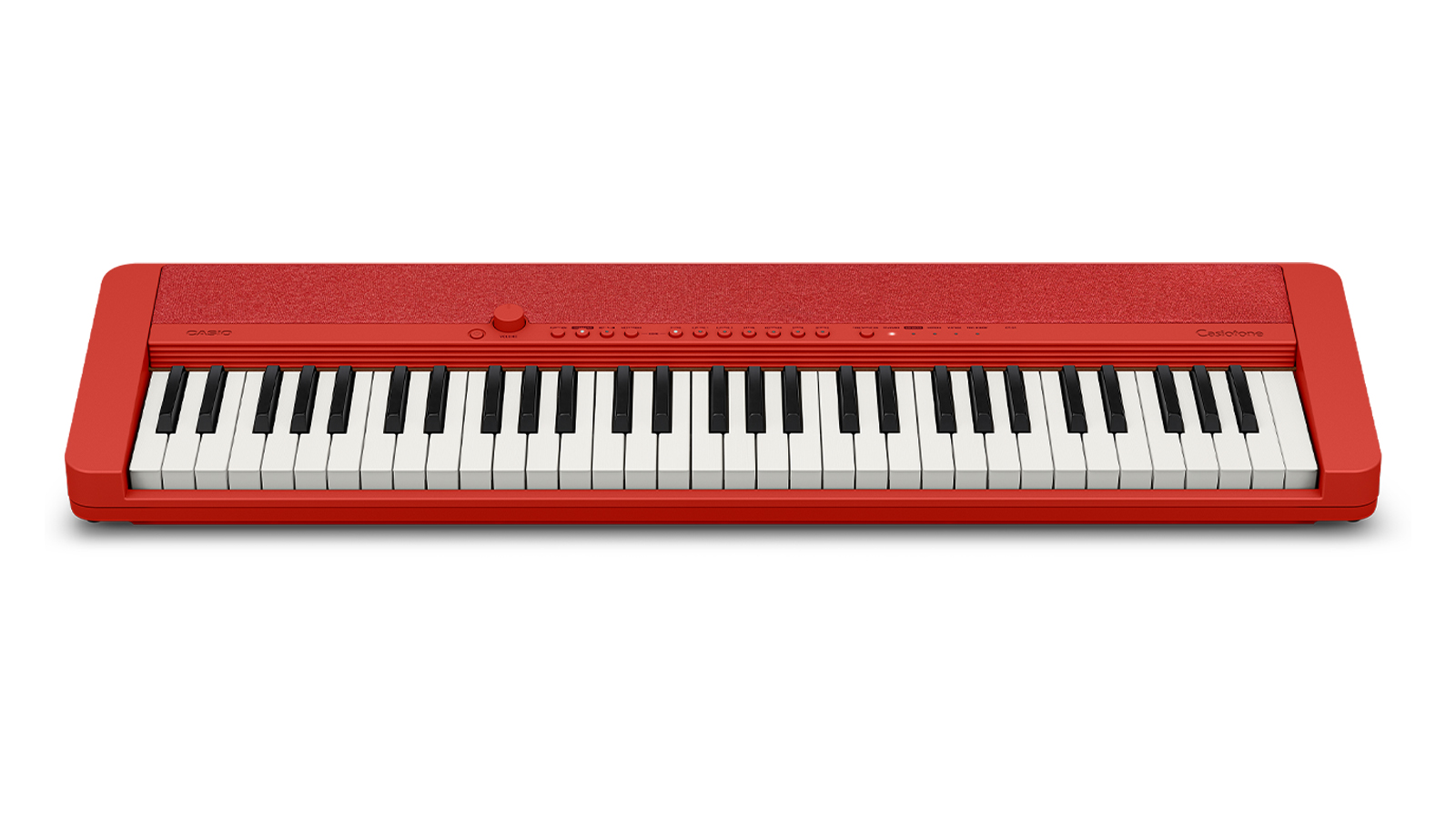
1. Casio Casiotone CT-S1
Our expert review:
Specifications
Reasons to buy
Reasons to avoid
Using the original '80s model as its inspiration, the CT-S1 is a modern take on Casio's famous portable keyboard. With 61 built-in voices, 61 full-size, touch-sensitive keys, and now 64 note polyphony, this is our top pick for beginners looking for an easy-to-use, great-sounding, and fabulously playing instrument that won't break the bank.
At the heart of the Casiotone is the AiX Sound Source. This sound engine delivers dynamic and expressive tones, perfect for beginners and professionals alike. The Casio Casitone is easily one of the best Casio keyboards on the market right now and easily takes our top slot.
Really, we can't think of a better all-rounder when it comes to a beginner-friendly keyboard.
Read our full Casio Casiotone CT-S1 review
Best on the go

Specifications
Reasons to buy
Reasons to avoid
The Roland GO:KEYS is a fun, compact and portable keyboard packed with over 500 high-quality sounds derived from Roland’s Juno DS engine. Offering fully wireless operation via battery power and Bluetooth audio / MIDI, the GO:KEYS lets you control MIDI devices wirelessly. Or, you can use it to stream your favourite music through the on-board speakers and then play along with those songs.
The Loop Mix function differs from conventional auto-arrangement methods, as you combine loops to build songs by simply playing notes on this electronic keyboard. Each key in the first octave triggers a different drum loop in your chosen style, next section up delivers a selection of bass lines, next up selects two different chord parts, and you can mix and match all of these while jamming out over the top.
Furthermore, you’ll find performance control strips switchable between either filter cutoff and note repeat FX, or pitch bend and modulation. Elsewhere on the Roland GO:KEYS electronic keyboard there’s a built-in 30,000-note song recorder with USB export, and all of this is backed up with Roland’s legendary build quality.
Read our full Roland GO:KEYS GO-61K review
Best for small hands
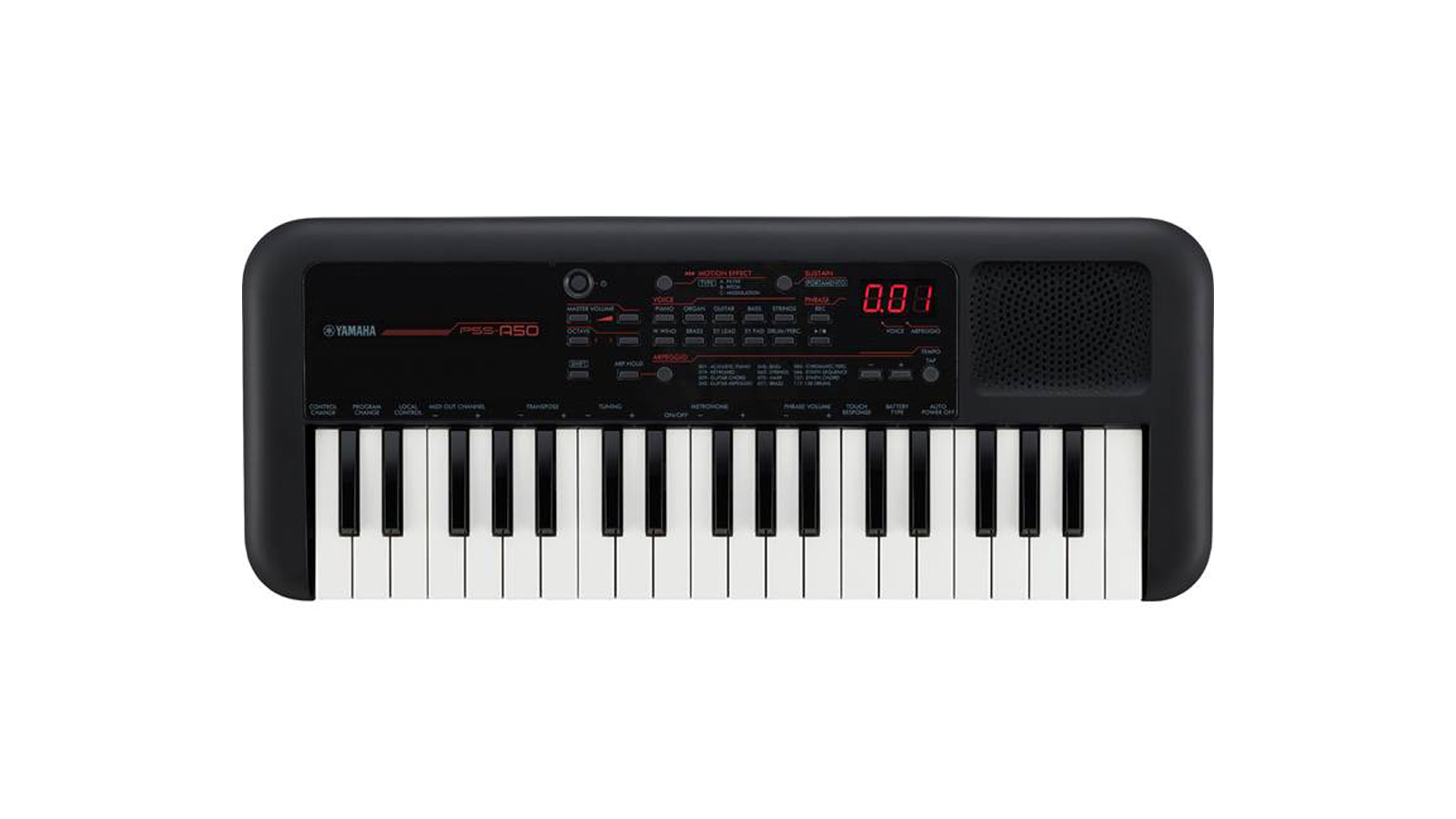
3. Yamaha PSS-A50
Our expert review:
Specifications
Reasons to buy
Reasons to avoid
Yamaha’s legendary PSS Portasound range from the 1980s has been reanimated in the shape of three new lightweight, sub-$/£100 models: the Yamaha PSS E30, F30 and A50. With cartoon FX and a quiz mode, the E30 is aimed at younger kids, and the F30 for more auto-accompaniment styles. Our pick of the bunch is the Yamaha PSS-A50.
Geared more towards portable synth-based, dance-oriented music making, the A50 drops the F30’s auto-accompaniment features in favour of a flexible arpeggiator and motion FX function. This electronic keyboard delivers real-time pitch bend, filter modulation and slowdown effects, all at the touch of a button. It’s packed with 138 different arpeggiator types, a portamento switch and 42 high-quality sounds sourced from Yamaha’s pricier E-series keyboards.
One of the biggest surprises from the Yamaha PSS-A50 electronic keyboard is its high-quality, velocity-sensitive keybed, taken from Yamaha’s Reface synth series, whose 37-note mini key format makes the unit incredibly lightweight and portable. Capable of running on batteries or USB power, all this means that the A50 makes a decent basic MIDI controller as well as a super-fun twist on portable keyboards.
Intermediate keyboards
Next up, we have intermediate-level keyboards that up the ante in terms of playability and sound. The following options from Korg and Casio are ideal for those looking to move on from their first keyboard.
Best for volume
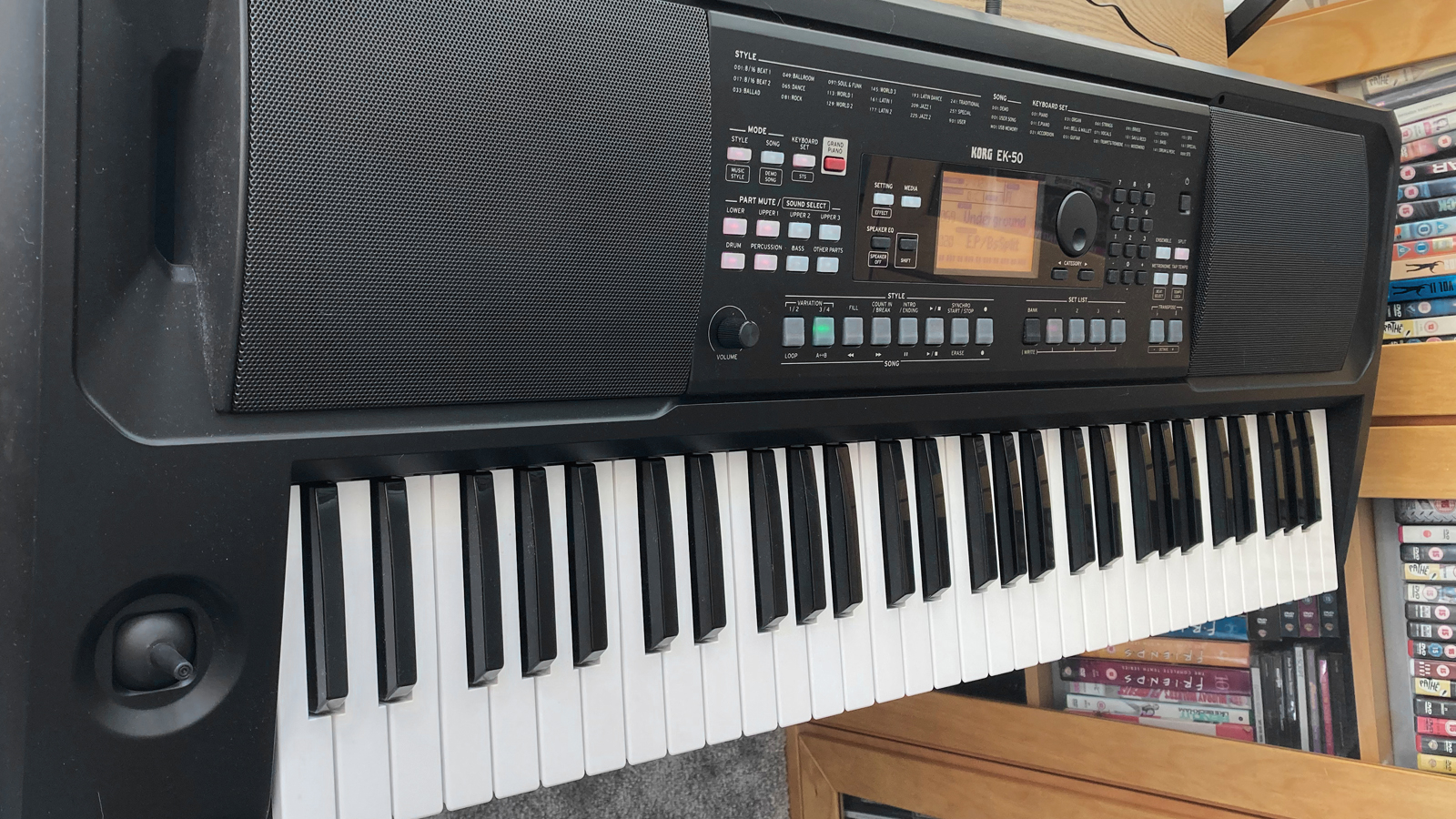
4. Korg EK-50 Electronic Keyboard
Our expert review:
Specifications
Reasons to buy
Reasons to avoid
The Korg EK-50 is a powerhouse of an arranger keyboard at a shockingly affordable price. For us, the EK-50's generous variety of onboard arrangement styles and rhythms make it a great source of fun for hobbyists, kids and beginners as well as more serious players.
As you'd expect from a Korg product, the sounds are very good and cover a wide spectrum of genres. The accompaniment programming is versatile, sophisticated and nicely arranged, and on a performance-focussed instrument such as this, the joystick is a very welcome addition.
So if you are in the market for an affordable and portable arranger keyboard, with a sonic power that punches well above its weight, then look no further than the Korg EK-50.
Read our full Korg EK-50 review
Best on a budget

5. Casio CT-X700 Electronic Keyboard
Our expert review:
Specifications
Reasons to buy
Reasons to avoid
The entry point for Casio’s latest CT-X lineup of portable electronic keyboards, the Casio CT-X700 benefits from the AiX (Acoustic Intelligent Expression) sound engine developed especially for the CT-X range, representing a big improvement over previous CT models.
Of the 600 AiX-generated tones, the dynamic piano, organ, string and synth sounds are the CT-X700’s strong suits, and there’s a large bank of world instruments to explore. You’ll also find 195 preprogrammed rhythms with variations and fills, 110 song demos, and 50 practice exercises on board.
You can layer dual voices and split the keyboard. There’s a decent six-track song recorder and 32 memory slots to store user settings as custom presets. The Casio CT-X700 electronic keyboard can be powered by mains, six x AA batteries or by USB, and an auxiliary audio input lets you jam along to streamed songs from a smartphone, resting your device on a specially-designed pad as you do so.
Read our full Casio CT-X700 review
Professional keyboards
Lastly we have professional-grade keyboards for gigging musicians or studio fanatics looking for the best of the best. In this section we have both touring quality stage pianos and state-of-the-art workstations.
Best pro sounds
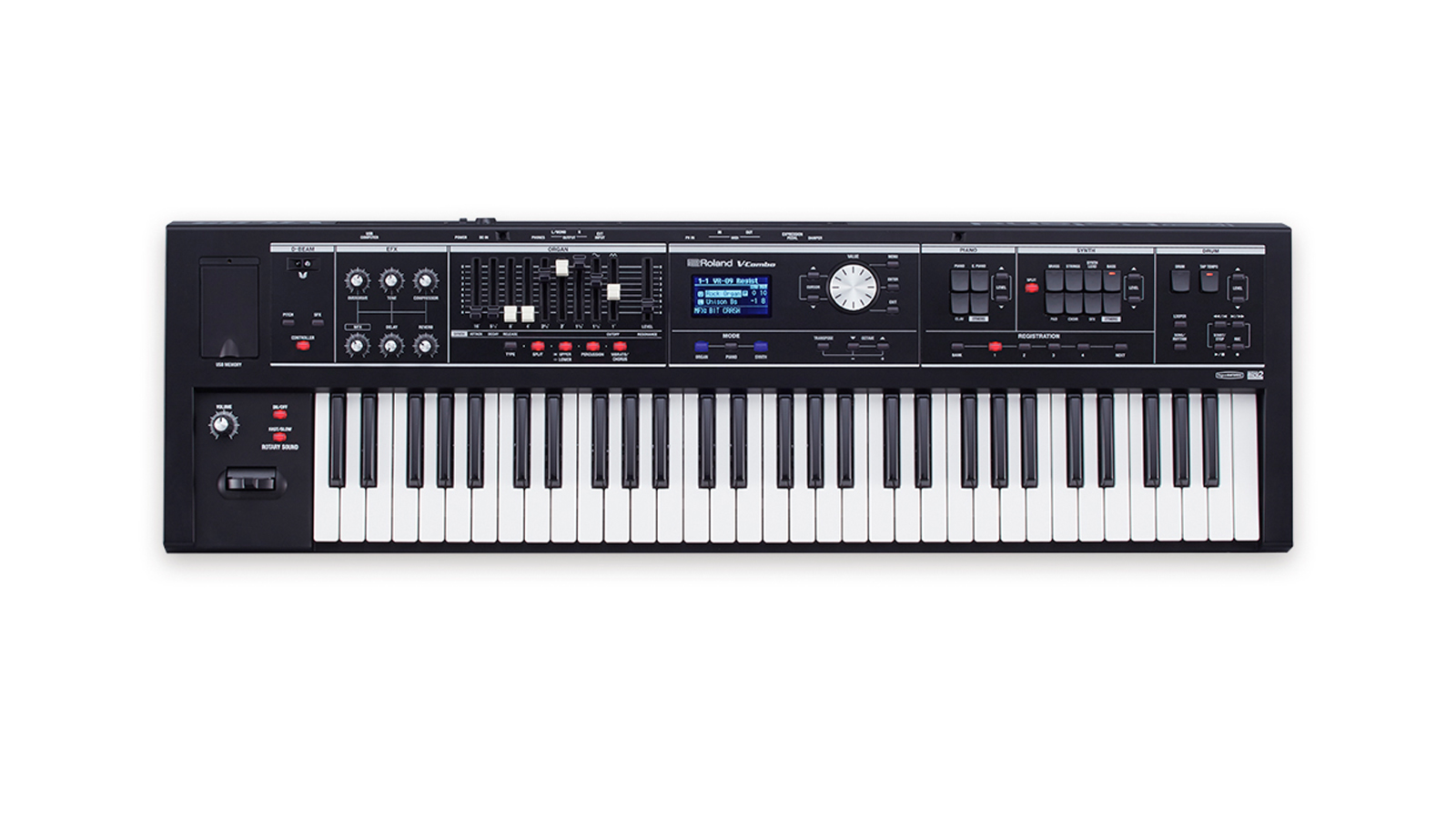
6. Roland VR-09-B V-Combo Keyboard
Our expert review:
Specifications
Reasons to buy
Reasons to avoid
With Roland being one of the industry leaders in electronic instruments, there is no shortage of keyboards to choose from. Still, when it comes to a lightweight, affordable instrument that’s full to the brim with iconic sounds, our choice had to be the Roland VR-09-B.
This sleek 61 note keyboard is designed with the professional musician in mind, giving you access to a wide variety of voices suitable for any musical situation. With everything from pianos to synths, electric pianos to organs, you’ll never run out of sounds to experiment with - and each sound is easily adjusted via its neatly organized front panel.
Other outstanding features include the SuperNATURAL Synth engine, organ drawbars, built-in rotary effect and the extremely fun D-Beam controller. So if you are looking for a feature-packed, performance-ready instrument, then the Roland VR-09-B V-Combo keyboard is the one for you.
Read our full Roland VR-09-B V-Combo review
Best arranger

7. Yamaha Genos
Our expert review:
Specifications
Reasons to buy
Reasons to avoid
Yamaha’s successor to the well-loved Tyros line of high-end arranger keyboards, the Genos justifies its eye-watering price tag by sounding unlike any other keyboard on the market. Apart from the price, the main thing that sets it apart from the other keyboards on this list is the absence of any built-in speakers - you have to plug it in to an optional speaker set, PA or mixing desk, or just use studio headphones.
This indicates that the Yamaha Genos is the best electronic keyboard for professional songwriters, producers, composers and performers, and this is borne out by the sheer quality and quantity of the thousands of onboard sounds. Meanwhile, the sophistication and versatility of the 550 styles available for your built-in backing band improves greatly upon those found in the Tyros.
With a wealth of advanced features such as assignable knobs and sliders, voice harmony and vocoder functions, audio recording, and super articulation presets, the phrase ‘bells and whistles’ could have been coined to describe the Yamaha Genos electronic keyboard. It’s as fitting an example of the adage ‘you get what you pay for’ as you’ll ever find.
Best for touring
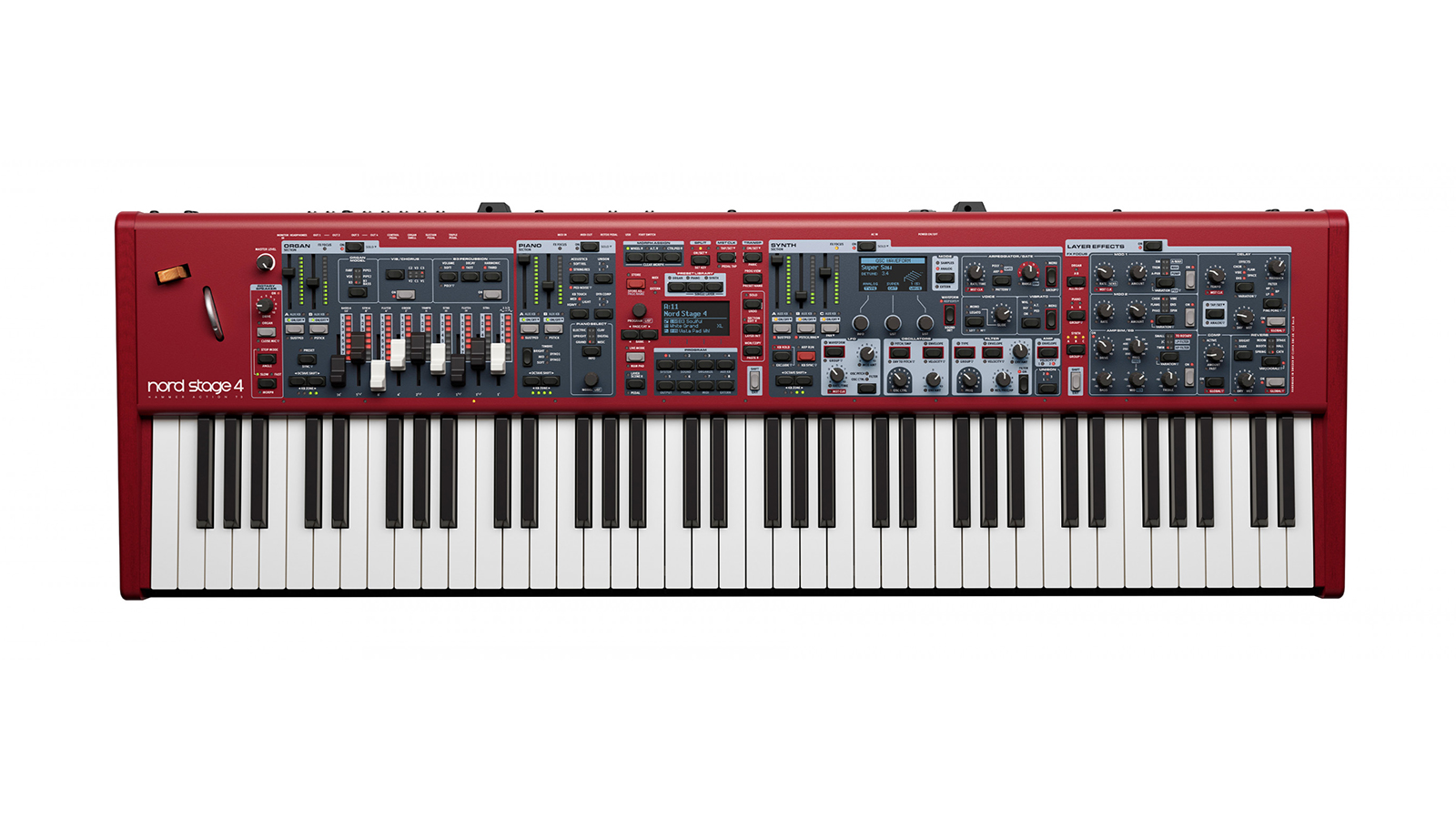
8. Clavia Nord Stage 4 73
Our expert review:
Specifications
Reasons to buy
Reasons to avoid
Strictly speaking, the Nord Stage 4 is a stage piano, which, as the name suggests, is a term coined to describe robust portable pianos designed for pros to use on stage. But it’s so much more than that, and besides, Swedish brand Clavia already has the Nord Piano 5 in its portfolio (which, incidentally, is also much more than just a stage piano). Consequently, it deserves a place in this guide.
Spot any well-known artist performing with a red keyboard and it’s almost certainly a Nord, they’re that ubiquitous in pro circles. Certainly, the Nord Stage 4 doesn’t offer real-time auto accompaniment, a feature expected of electronic arranger keyboards. It does, however, offer a huge range of sounds and sound shaping possibilities, splits, layers and an arpeggiator. So, it’s far from a one-track pony, and is very much at home building up layered performances.
Many keyboards take a good stab at producing a handful of decent piano sounds, some fun organ presets, a dozen synth pads plus a few lead tones and a battery of useful effects. A jack of all trades, master of none approach, if you like. The Nord is equally as versatile, but it’s in a class of its own. Clavia has equipped it with premium piano, organ, synth and effects engines that rival any top-notch standalone instrument or module. It’s ridiculously impressive.
It doesn’t have built-in speakers, but you can invest in a pair of attachable colour-matched near-field Nord Piano Monitors, which look and sound the business. There are two 73 key versions of the Stage 4, one with a fully-weighted keybed, the other semi-weighted, plus an 88 key fully-weighted model. Other than the keybed, all share the same feature set.
Why the deep shade of red? We like to think it’s been developed to match the colour of your post-purchase bank balance…
FAQs
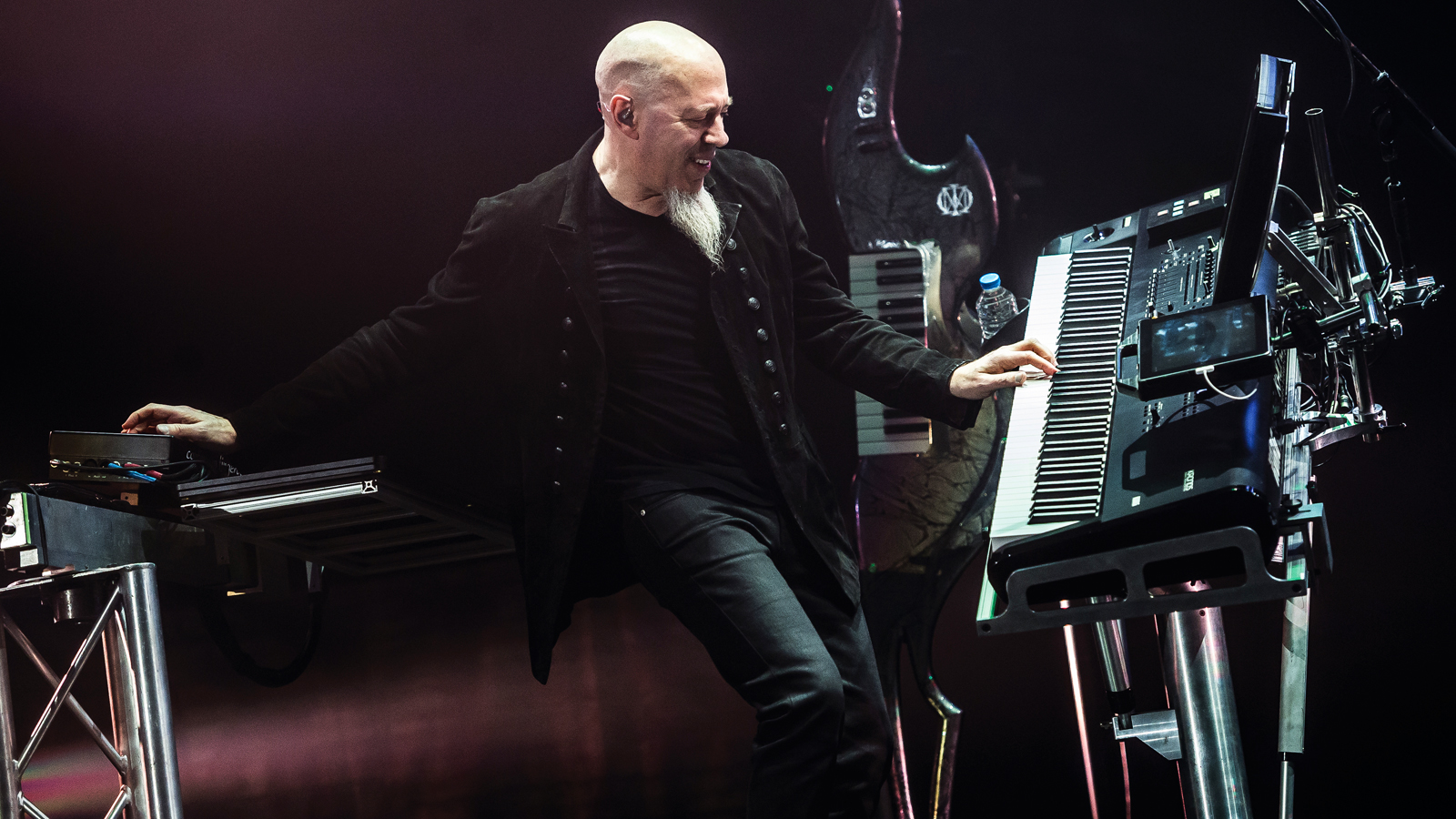
How do I choose the right keyboard for me?
So you’re in the market for a new electronic keyboard, but which type should you go for? The answer to this depends on your needs as a player. Home keyboards are great for newcomers in that they’re relatively inexpensive, lightweight and portable. They come with a range of sounds, onboard rhythm and backing band features, and often include a basic sequencer so that you can record a performance and jam over the top.
Workstation keyboards are more expensive as they’re designed to produce a full, studio-grade track without the need for a separate computer or DAW (digital audio workstation). These are the best electronic keyboards for studio or live performance scenarios, have advanced onboard sequencer capabilities, and are bristling with studio-quality sounds and professional features. Unsurprisingly, they have four-figure price tags to match.
Similarly, arranger keyboards are primarily aimed at performers who want to replicate a full band sound, making them the best electronic keyboards for those who want to perform as a ‘one-person-band’. Like home keyboards, arranger keyboards offer accompaniment styles that react to chord changes and other user interactions, but these tend to be way more flexible and sophisticated, featuring more styles than entry-level instruments.
What’s the difference between an electronic keyboard and digital piano?
Aside from the types of keyboard listed above, the best digital pianos are electronic keyboards designed to replicate the sound and feel of an acoustic piano. As such, they don’t usually offer the same degree of tonal variety and breadth of features, such as auto accompaniment and preset styles, found on other electronic keyboards.
Most digital pianos have 88 weighted keys, so these are much bigger and heavier than the kind of portable keyboards listed in our guide to the best electronic keyboards. That’s why we’ve excluded keyboards that are marketed as digital pianos, since these are slightly different and are covered in a separate guide.
We go into more detail on the digital piano vs keyboard debate in this article.
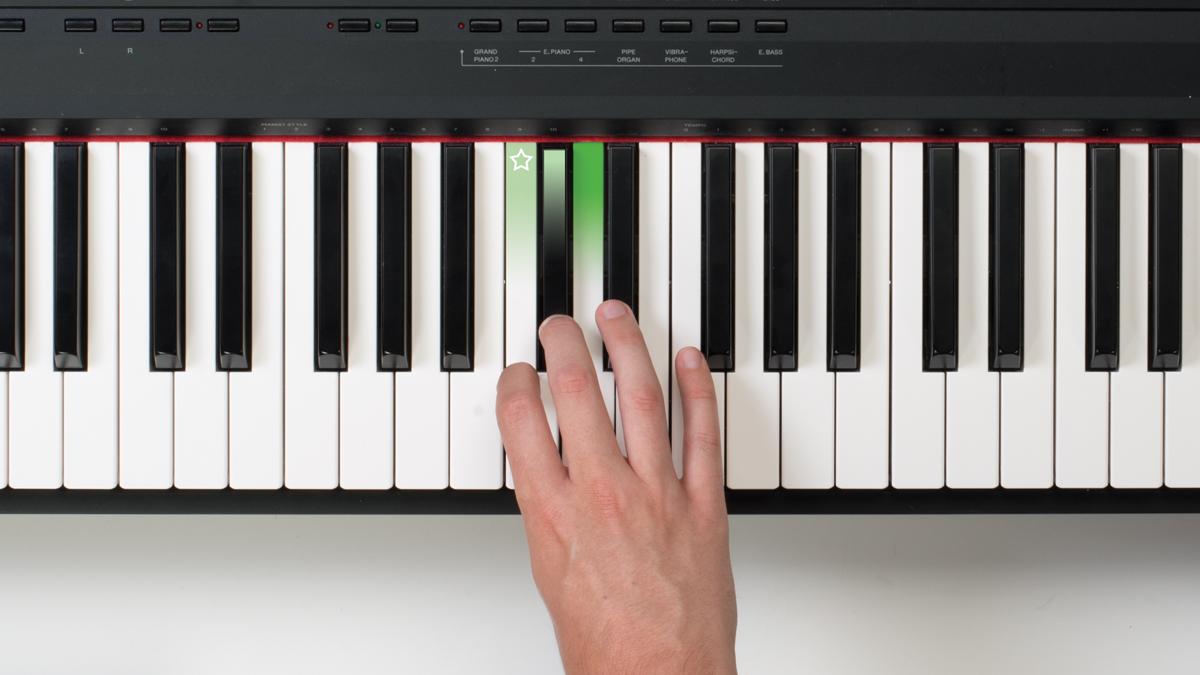
What should I look for in an electronic keyboard?
If you’re now shopping for an electronic keyboard, it’s a good idea to acquaint yourself with the basic features, as well as the more pro-level features you’ll find on the more expensive models. Let’s take a look at these now, starting with the actual keys…
Keys
When it comes to the number of keys, we’ve made 61 keys the optimum criteria for our round-up of the best electronic keyboards. This five-octave span is the most common size for this type of keyboard, giving plenty of scope for two-handed playing.
In terms of key size, most of the instruments in our electronic keyboards guide employ the full-size piano key format. Full-size keys are usually the best type to learn on, as it means your skills will be easily transferable should you ever find yourself sitting in front of a regular piano.
Headphone socket
If you don’t want to bother anybody else while playing, a headphone socket is a must on your electronic keyboard. This means you can keep your musical noodling to yourself without annoying the neighbours.
Speaker output
Built-in speakers are an essential feature for this type of electronic keyboard. As a rule of thumb, the higher the power output of the amp that powers the speakers, the louder the sound. So if you're looking for a room-filling sound without having to plug into an external portable PA system, higher-powered speakers could be important for you.
If not, the average home keyboard comes with a pair of speakers each with an output of between 2-5W or so, which should be perfectly adequate for home use.
Velocity sensitivity
A velocity-sensitive electronic keyboard will respond dynamically to your playing, so that soft playing results in quiet notes and harder playing creates louder sounds. Without it, sounds stay at the same volume no matter how hard you play, so velocity sensitivity is vital if you want to add any degree of expressiveness to your playing.
Maximum polyphony
An electronic keyboard’s maximum polyphony is a measure of how many notes can occur at once without notes cutting off abruptly as you play. You may not think of this as an issue, only having a maximum of ten fingers in play at any time, but on keyboards such as these that feature sophisticated auto-accompaniment features, every sound the keyboard is making counts towards this number.
So that includes drum and percussion sounds, bass and auto chord voices, as well as anything you might happen to be playing on top! So the higher the maximum polyphony, the more complicated the arrangements that your keyboard will be capable of handling.
Rhythms / styles
Auto-accompaniment has come a long way from its cheesy, muzak-flavoured early days. Reaching untold levels of sophistication, today’s home keyboards now offer a crazy number of genres and styles, providing a number of different variations that work for different parts of a song, such as intro, ending and fill sections.
The greater the number of rhythms and styles on offer, the more versatile your ‘backing band in a box’ will be. Entry-level electronic keyboards can still deliver a healthy helping of cheese, but high-end arranger workstations can make you sound like a professional studio artist simply by lifting a finger.
Power source
Most of the keyboards on this list can be run on both mains and battery power, giving you the best of both worlds when it comes to portability and flexible choice of setup location. However, some can also be powered from your computer via a USB connection, something else to bear in mind if you ever want to use your keyboard as a MIDI controller with your Digital Audio Workstation (DAW).
Also, if you’re intending to rely solely on mains power, check that a compatible power adapter is included in the price, as they don’t always come with one in the box
Sound engine
The technology behind the sounds found in today’s home keyboards continues to improve apace, to the point where a good deal of what was ridiculously high-end tech five years ago has now filtered down to the more affordable end of the spectrum.
A case in point is Yamaha’s AWM (Advanced Wave Memory) sound generation technology. Once the preserve of their high-end digital pianos, AWM is now found in their E series range of budget home keyboards, but is showing its age a little compared to newer tech like Casio’s AiX system.
Sustain pedal input
An acoustic piano can feature up to three foot pedals, but only one of them is absolutely essential when starting out, and that’s the sustain or ‘damper’ pedal. For this reason, most keyboards now offer a sustain pedal input, in order to achieve a realistic acoustic piano sound, but often don’t include a compatible pedal in the price.
Auxiliary audio input
An audio input will enable you to plug an external sound source (such as an MP3 player or a smartphone connected to a music streaming service) into your electronic keyboard so that the sound of it will come out of the onboard speakers, and you can play along to your favourite songs.
Bluetooth Audio / MIDI
Some models of electronic keyboard now offer Bluetooth capability. Together with companion smartphone apps, Bluetooth enables you to stream music from your mobile device through the keyboard’s speakers as you play along. It also enables you to record MIDI data of your performance over Bluetooth into the companion app or a third-party DAW for evaluation and editing.
Audio interface
If you plan to do any kind of computer-based audio recording with your electronic keyboard, you’ll ultimately need a way of getting the sound from your keyboard into the computer. This is where an audio interface comes in, a box that sits between your instrument and computer and converts the sound your keyboard produces into a format of data that can be stored and played back by your DAW.
This usually means having to connect up an external box, but some electronic keyboards now feature USB audio interfaces built-in, negating the need for that extra box when connecting to a DAW-based system. While not essential, this kind of functionality does come in handy if you want to keep cable-related faff down to a minimum.
Educational features
A huge sector of the marketing demographic for these types of keyboards is education, as the vast majority of keyboard players start to learn as children. To that end, a lot of home keyboards are targeted mainly at beginners, and will offer some sort of onboard educational system, such as onboard songs to learn, illuminated keys that tell you what notes to play, built-in music lesson functions or bundled subscriptions to online piano lesson services.
Layer / Split
Other common features include extra keyboard modes such as layer or split. Layer mode layers two sounds together so they can be played simultaneously, while split mode enables two different sounds to be played from the upper and lower regions of the keyboard - useful for combining a bass part in the left hand with a piano or organ sound in the right, for example.
What size keyboard should I be looking for?
As previously mentioned, we’ve featured mainly 61 key ‘boards in this guide, mostly because five octaves provide an adequate range for most players. Generally speaking, they’ll be relatively compact too, which is an important consideration for many.
Other than the Yamaha Genos, all of the 61 key models measure less than a metre across. So, even if you’re a bit tight on space at home, hopefully you’ll still be able to find a suitable corner for your new musical box of tricks. If you’re a gigging musician, they’ll also fit comfortably in the boot/trunk of a hatchback or on the back seat of a small car.
Most weigh under 10kg (many less than 5kg), which also makes them easy to move from gig to gig or around the house.
A quick caveat. Pro players looking for more versatility will naturally demand more keys and may be happy trading compact size for more range. Inevitably, there is also a relationship between quality/robustness and weight. That’s not to say that some of the lighter keyboards featured here are poor quality, it’s just that if you’re living a life on the road you’ll need to ensure that your equipment is as fit for purpose as you are.
Do I need to buy a keyboard stand?
Every good keyboard deserves a great stand. This is not an area to skimp on, so buy a keyboard stand that’s sturdy, reliable and will glue your keyboard to the spot with limpet-like tenacity.
Stands come in all shapes and sizes from A-Frames to Z-Styles - check out our best keyboard stands buyer’s guide for the top picks. Inexpensive X-Stands are often bundled with keyboards, and they can be surprisingly good unless you’re a taller player.
Trust us, constantly knocking your knees against the stand’s legs will drive you to distraction - there are better options out there even if they will cost you a bit more.
Why you can trust us
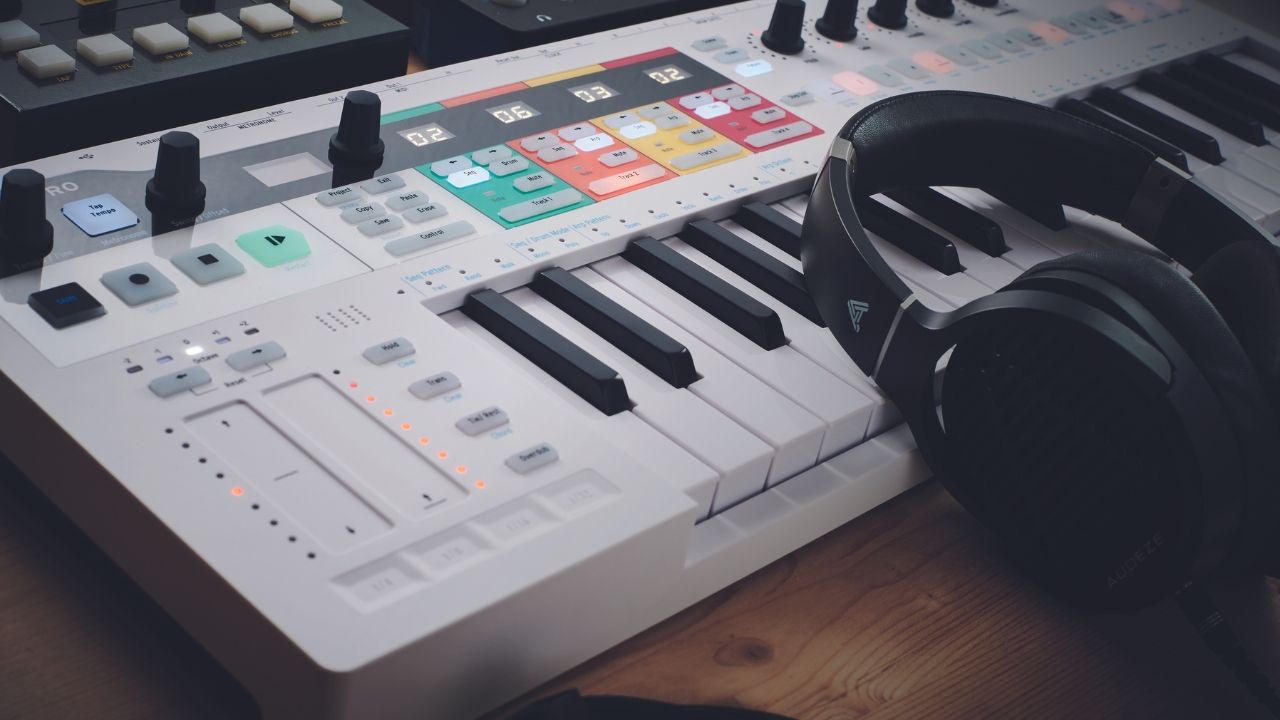
With more than 17 years of experience, MusicRadar is the premier music-making website in the world. Run by musicians for musicians, we offer expertly written gear round-ups and high-quality, authoritative reviews by an extensive team of highly experienced industry professionals.
We also interview world-renowned musicians and stars about their creative processes and the nuts and bolts of their gear and technique. This gives fans an insight into the actual craft of music-making that no other music website can.
But that's not all. We also provide excellent tuition, from bite-sized tips to advanced techniques and guidance from recognised musicians.
As well as delivering high quality written reviews and features, we also produce a wealth of video content on YouTube. MusicRadarTV is where you'll find all of our access-all-areas interviews, hot gear demos and exclusive video lessons.
Below you'll find more information on the authors of this guide.
Meet the experts

Dave is an expert in all things keys, from beginner keyboards, to digital pianos, synths and beyond, and has been a music technology writer and product tester since 2007, contributing to the likes of Computer Music, iCreate, MusicRadar and Attack Magazine. Dave has also programmed and played keys on recordings by a range of world-renowned artists including George Michael, Kylie and Gary Barlow.
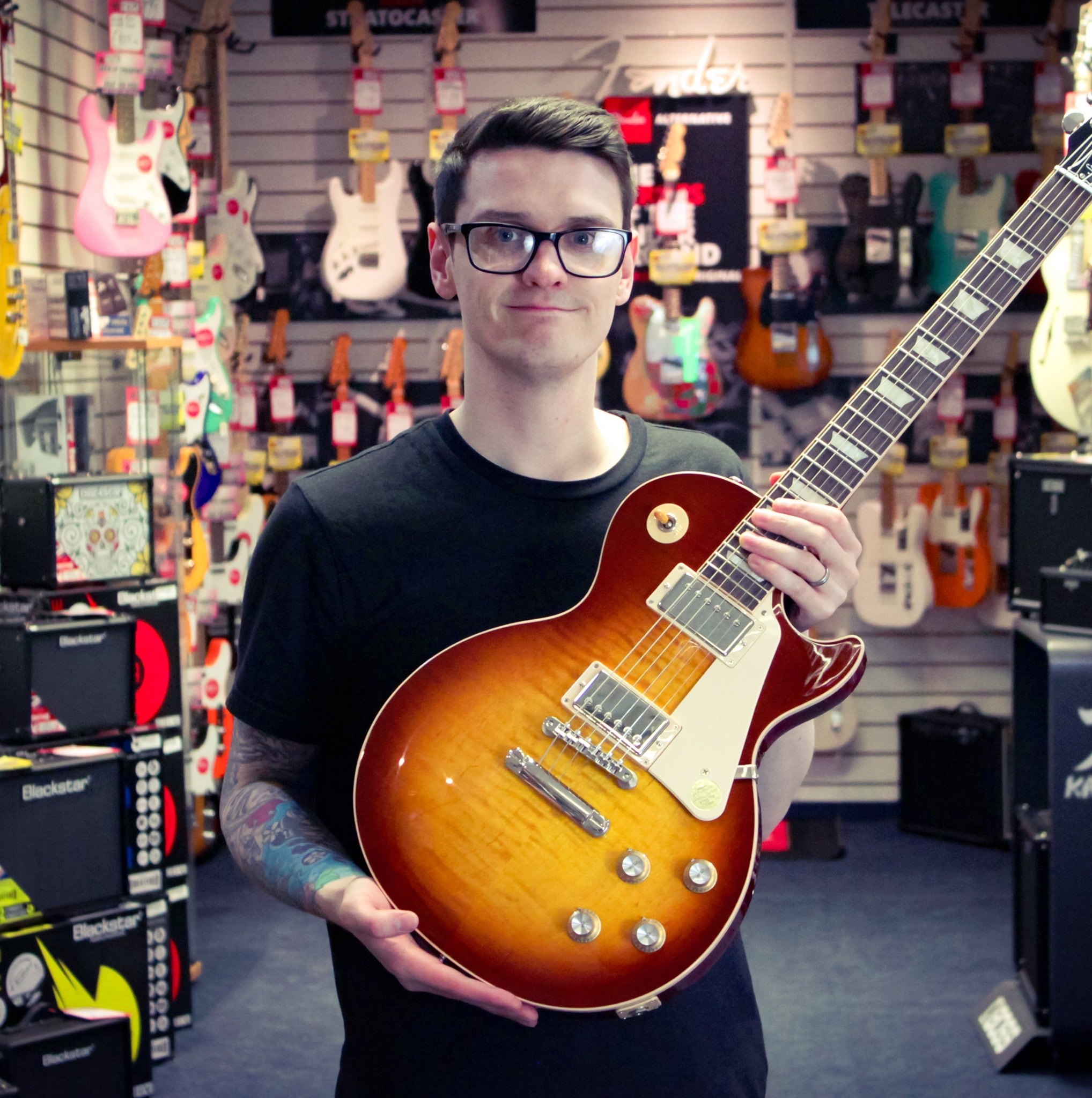
Daryl is a Senior Deals Writer at MusicRadar and is responsible for writing and maintaining buyer's guides on the site as well as testing out products for reviews. Before writing for MusicRadar, Daryl worked for many years in music retail, helping musicians of all ages find the best gear for them. Whether it was a beginner's first keyboard or a top-of-the-range digital piano for the pros, Daryl was there to help steer players in the right direction.
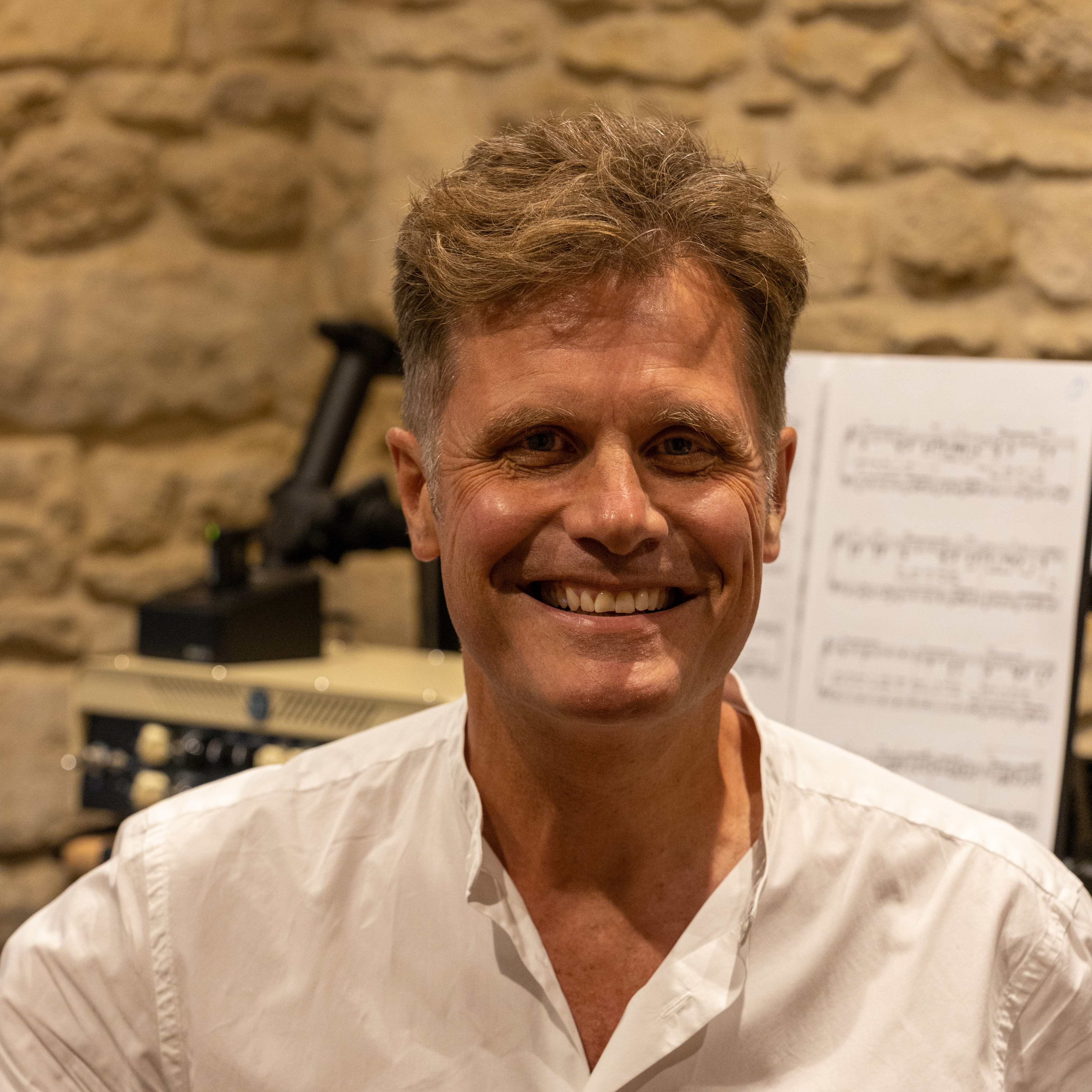
When Simon's childhood classical guitar teacher boasted he 'enjoyed a challenge', the poor man had no idea how much he'd underestimated the scale of the task ahead. Despite Simon's lack of talent, the experience did spark a lifelong passion for music. His classical guitar was discarded for an electric, then a room full of electrics before Simon discovered the joys of keys. Against all odds, Simon somehow managed to blag a career as a fashion journalist, but he's now more suitably employed writing for MusicRadar and Guitar World. When not writing or playing, he can be found terrifying himself on his mountain bike.
How we choose products

Here at MusicRadar, we are experts in our field, with many years of playing, creating and product testing between us. We live and breathe everything music gear related, and we draw on this knowledge and experience of using products in live, recording and rehearsal scenarios when selecting the products for our guides.
When choosing what we believe to be the best electronic keyboards available right now, we combine our hands-on experience, user reviews and testimonies and engage in lengthy discussions with our editorial colleagues to reach a consensus about the top products in any given category.
First and foremost, we are musicians, and we want other players to find the right product for them. So we take into careful consideration everything from budget to feature set, ease of use and durability to come up with a list of what we can safely say are the best electronic keyboards on the market right now.
Find out more about how we test music gear and services at MusicRadar.
Related buyer's guides
MusicRadar's got your back
- Strike a chord with the best digital pianos for beginners
- Develop your skills with the best online piano lessons
- Explore our pick of the best Casio keyboards
- These are the best piano VSTs
Get the MusicRadar Newsletter
Want all the hottest music and gear news, reviews, deals, features and more, direct to your inbox? Sign up here.
Dave has been making music with computers since 1988 and his engineering, programming and keyboard-playing has featured on recordings by artists including George Michael, Kylie and Gary Barlow. A music technology writer since 2007, he’s Computer Music’s long-serving songwriting and music theory columnist, iCreate magazine’s resident Logic Pro expert and a regular contributor to MusicRadar and Attack Magazine. He also lectures on synthesis at Leeds Conservatoire of Music and is the author of Avid Pro Tools Basics.
- Simon Fellows
- Daryl RobertsonSenior Deals Writer
MusicRadar deals of the week: Enjoy a mind-blowing $600 off a full-fat Gibson Les Paul, £500 off Kirk Hammett's Epiphone Greeny, and so much more
“For those who think they know Joel’s story, as well as those who are not as familiar, I believe this two-part film is both a revelation and a surprise”: New Billy Joel doc is on the way